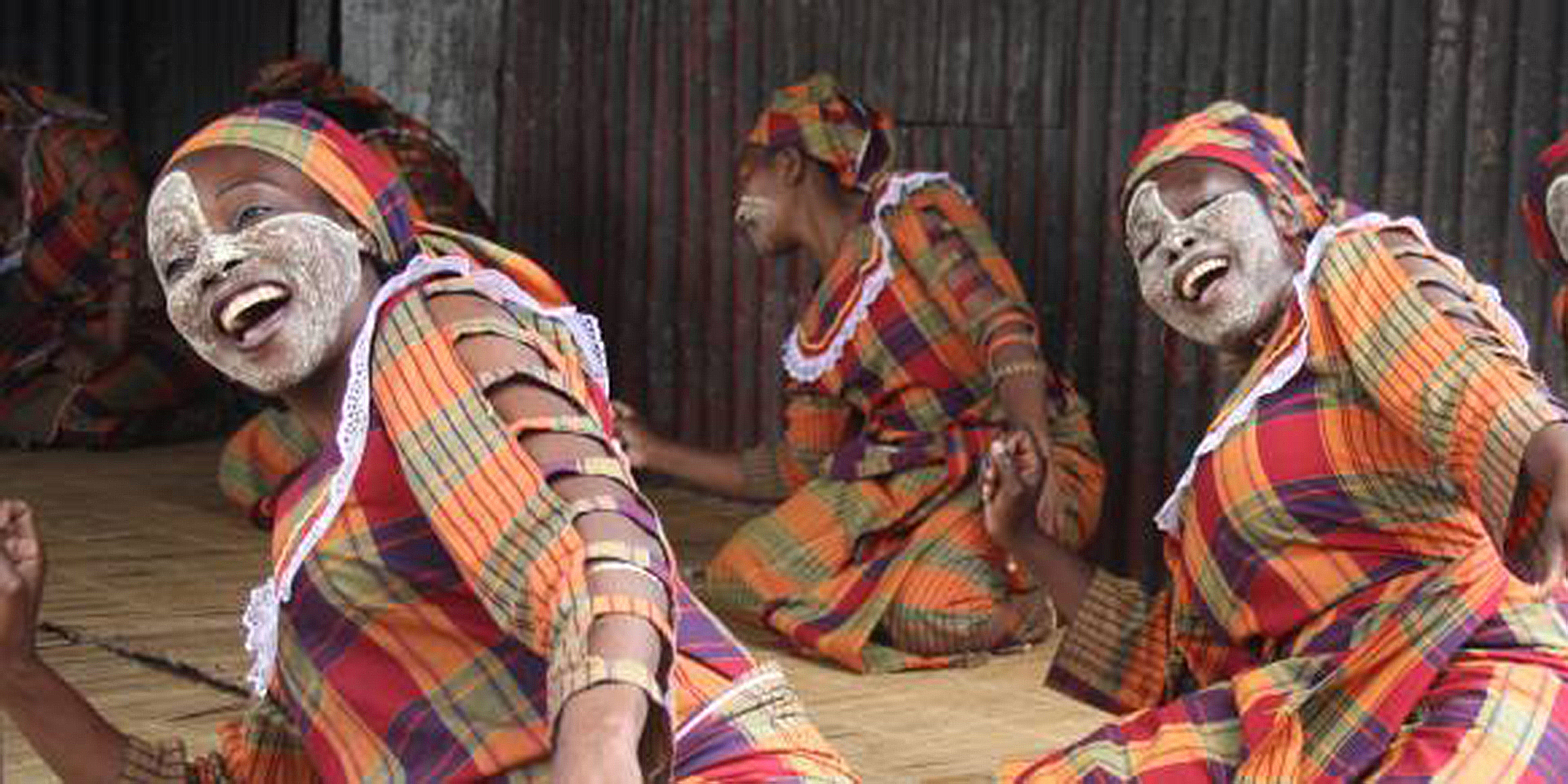
A Return to the Stage in Mozambique
November 12, 2015 | 2 Minute ReadDancers perform traditional theater at the Tambo cultural center. The center uses cultural traditions to educate people about adapting to climate change and population growth.
Beyond the bamboo gate at Vitor Raposo’s cultural center in Pemba, Mozambique, a canopy of trees threaded with artwork and wind chimes welcomes me into a tranquil courtyard. Tambo Tambulani Tambo is a peaceful refuge, a stark contrast from nearby construction sites and spirals of soot rising from newly forged roads. With investors racing to build resorts and guesthouses along the city’s coastline to accommodate a recent economic boom — driven in part by the discovery of natural gas in the nearby Rovuma Basin — Pemba’s population is rising quickly. But this surge in population and development has also caused overcrowding and a slew of environmental, sanitation, and health issues.
During my interviews with Pemba residents on a recent communications assignment, I unearthed some of the underlying causes of the city’s development challenges. A lot of the people that I spoke with — from municipal officials to taxi drivers — blamed lingering cultural practices that favored the old ways versus the new, such as choosing to relieve oneself outside rather than using community latrines. But Vitor insisted that culture could be the solution to these challenges, not a cause.
As part of his role at Tambo, Vitor mentors young people to organize traditional theater, embracing the regional moqua style, in which the narrator performs as an actor and dancer, and audience members participate to shape the outcome of the drama. Part entertainment, part education, some plays focus on the risks of climate change and promote adaptation options for the community, such as eradicating littering and open-air defecation, which not only fuel disease but also prevent proper drainage and increase flooding during tropical storms.
Somewhat to Vitor’s surprise, he told me, community members have consistently praised the plays, even when the storylines touch on controversial issues. Thanks to the narrator’s non-confrontational method of bringing up topics in an open space where the audience can comment, interrupt, and propose solutions that make sense to them, residents seem to be more interested in sanitation issues and more conscientious of how their habits affect the community’s health, environment, and economy. For example, Pembans are using municipal trash bins more often now, and the streets and gutters surrounding the center no longer overflow with garbage, making it easier for customers to access local businesses.
Although it is impossible to attribute these positive changes entirely to Tambo’s plays without the proper metrics, I couldn’t help but wonder if the plays’ lessons and messaging hadn’t already started seeping into nearby neighborhoods and nurturing positive change. Vitor certainly thinks this is the case, and he plans to expand the center’s youth theater to focus on topics like education, HIV/AIDS, and social conflict. These are issues that affect the entire community but that youth can broach more effectively through humor and word-of-mouth tactics.
“Even if just a few young people take action, it can have a ripple effect,” he reflected.
As I walked back out of the center’s bamboo gate, I had one overwhelming thought: What if the global development community committed to placing culture at the center of all of its projects?
What do you think? Leave your comments below.












